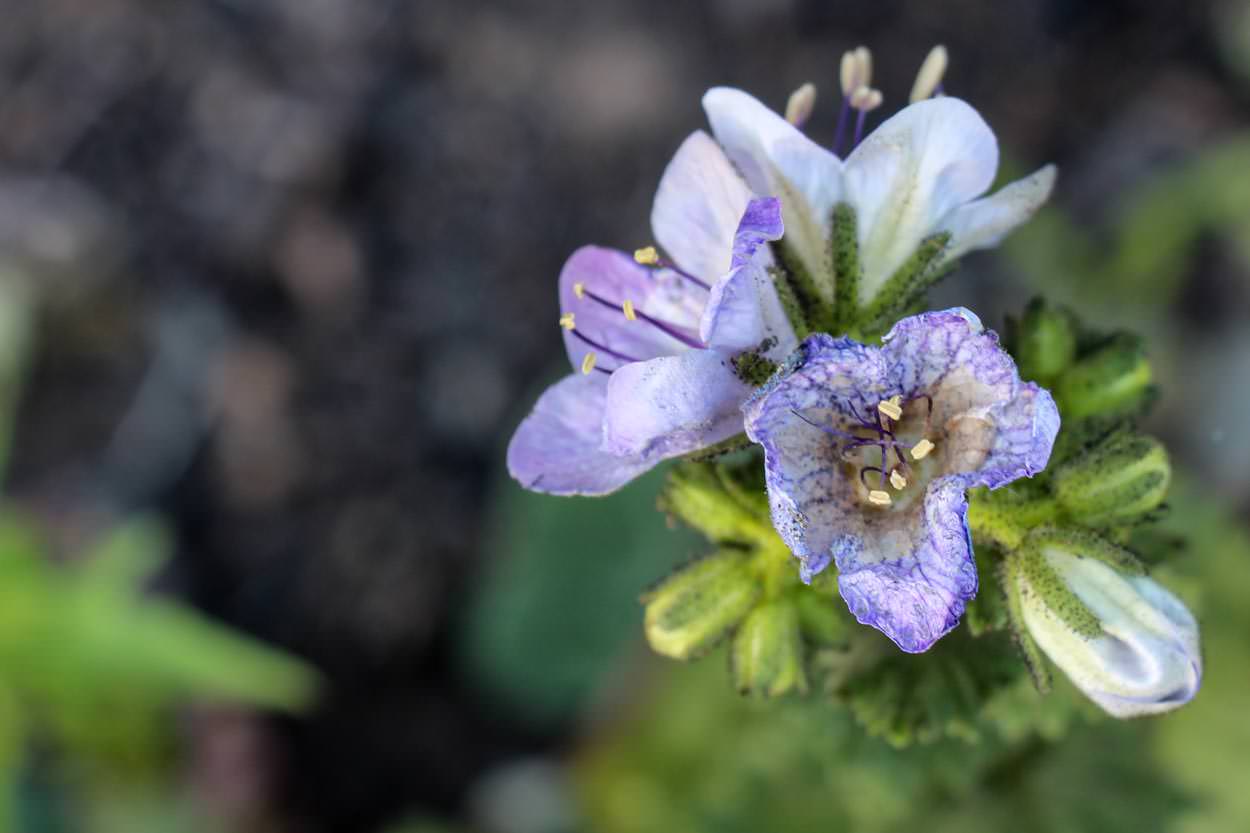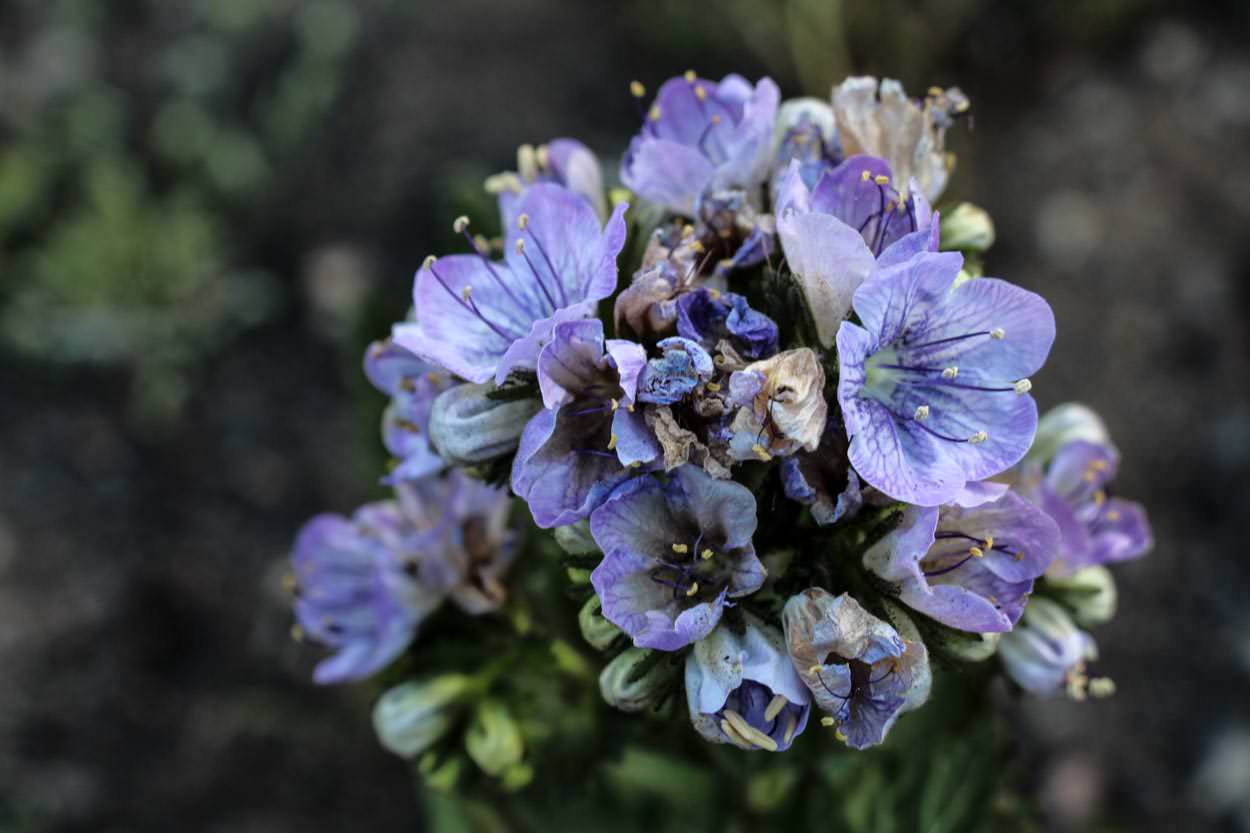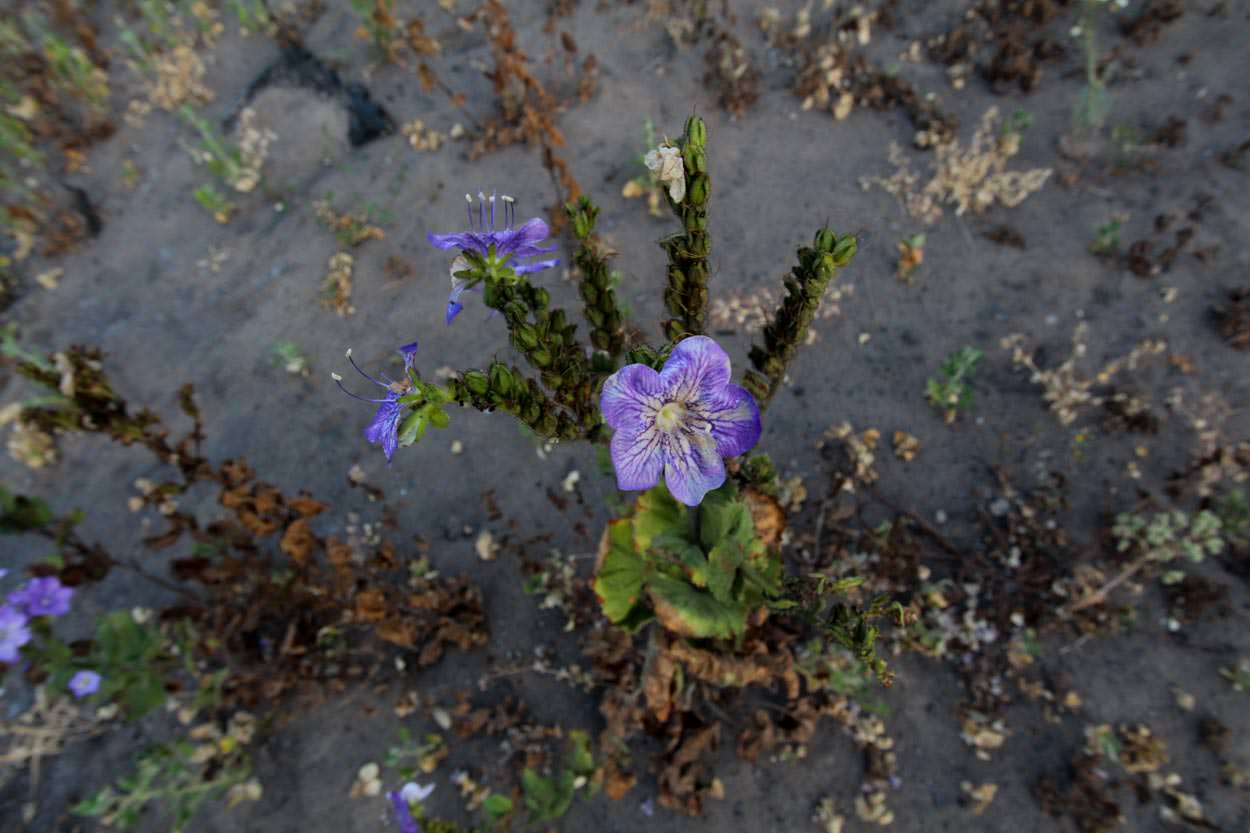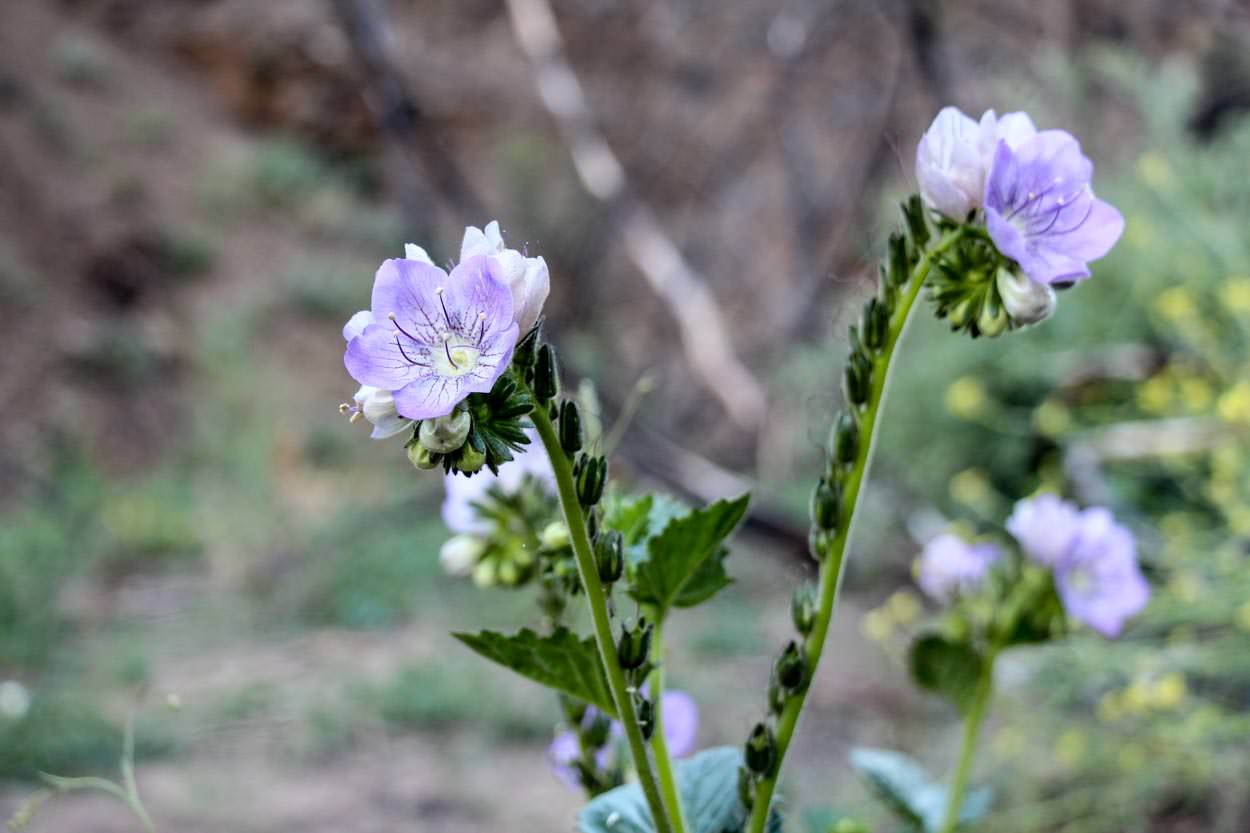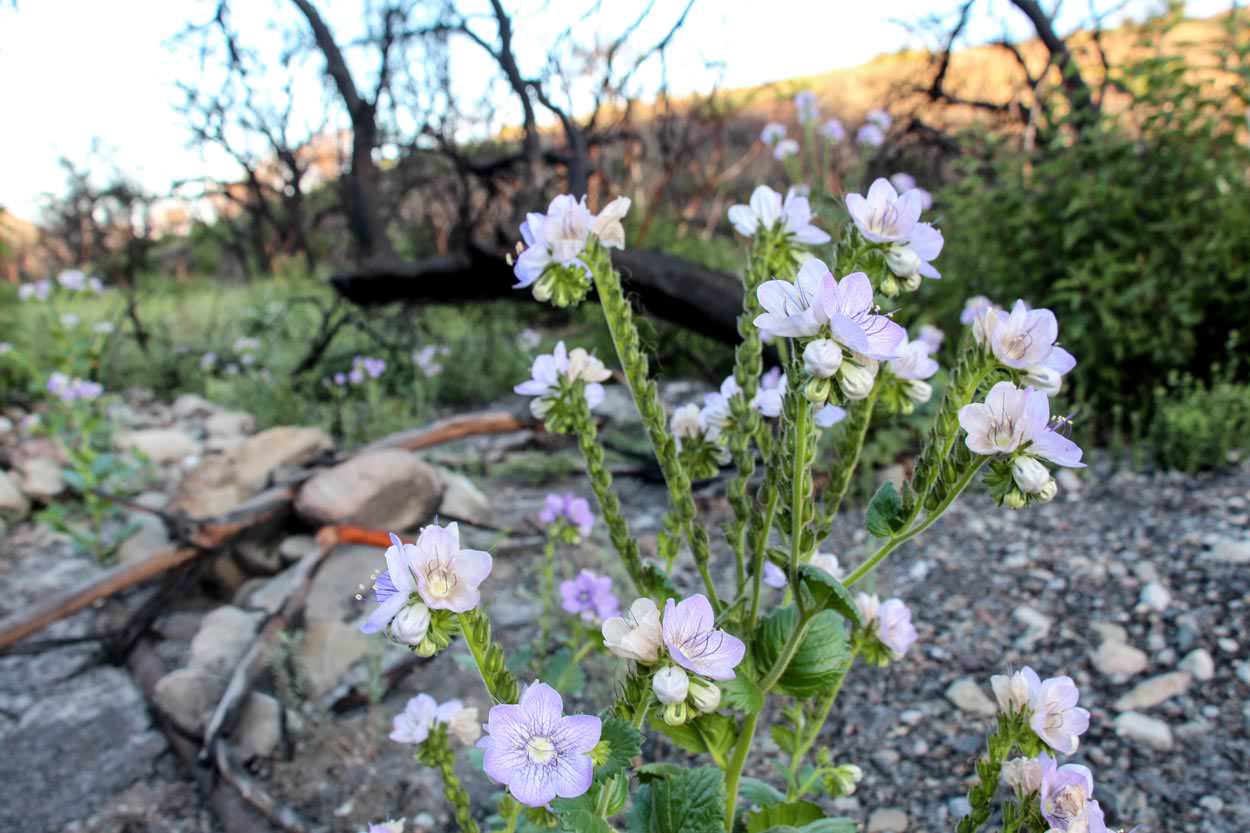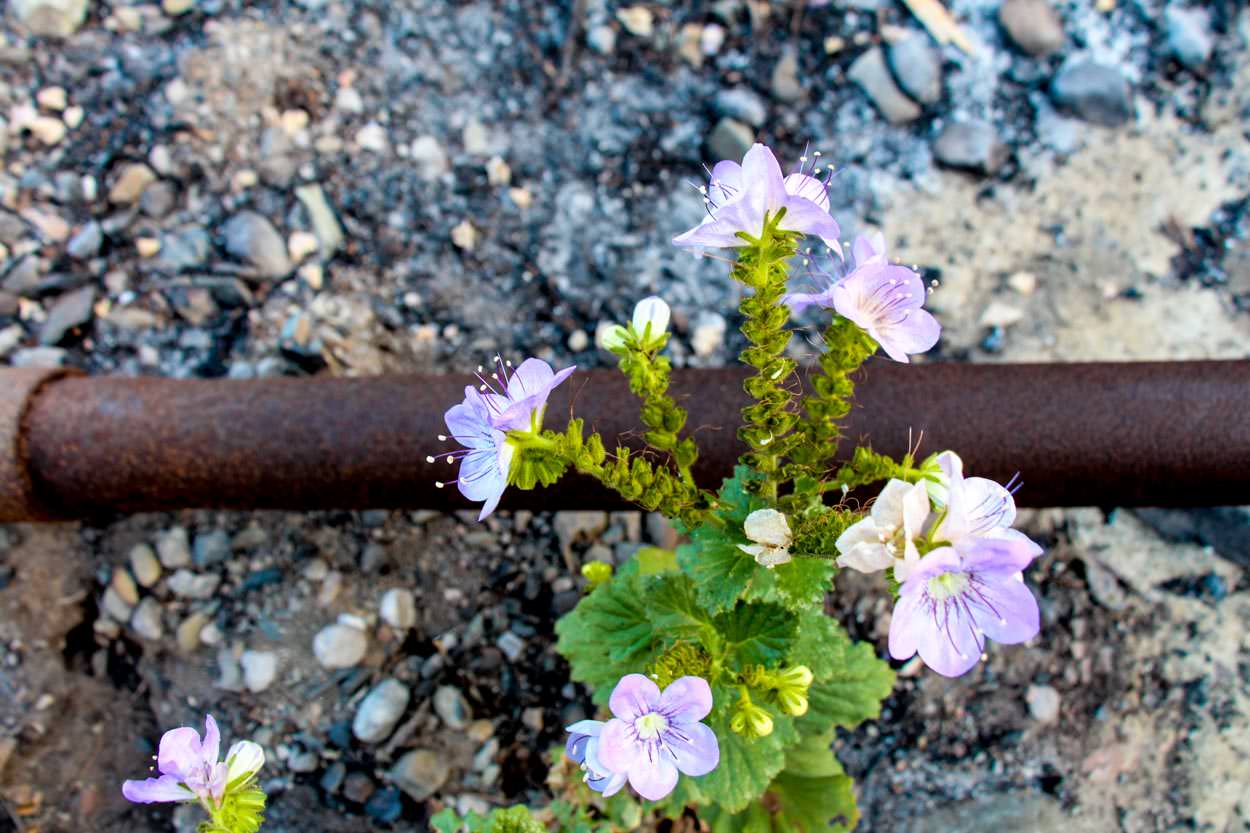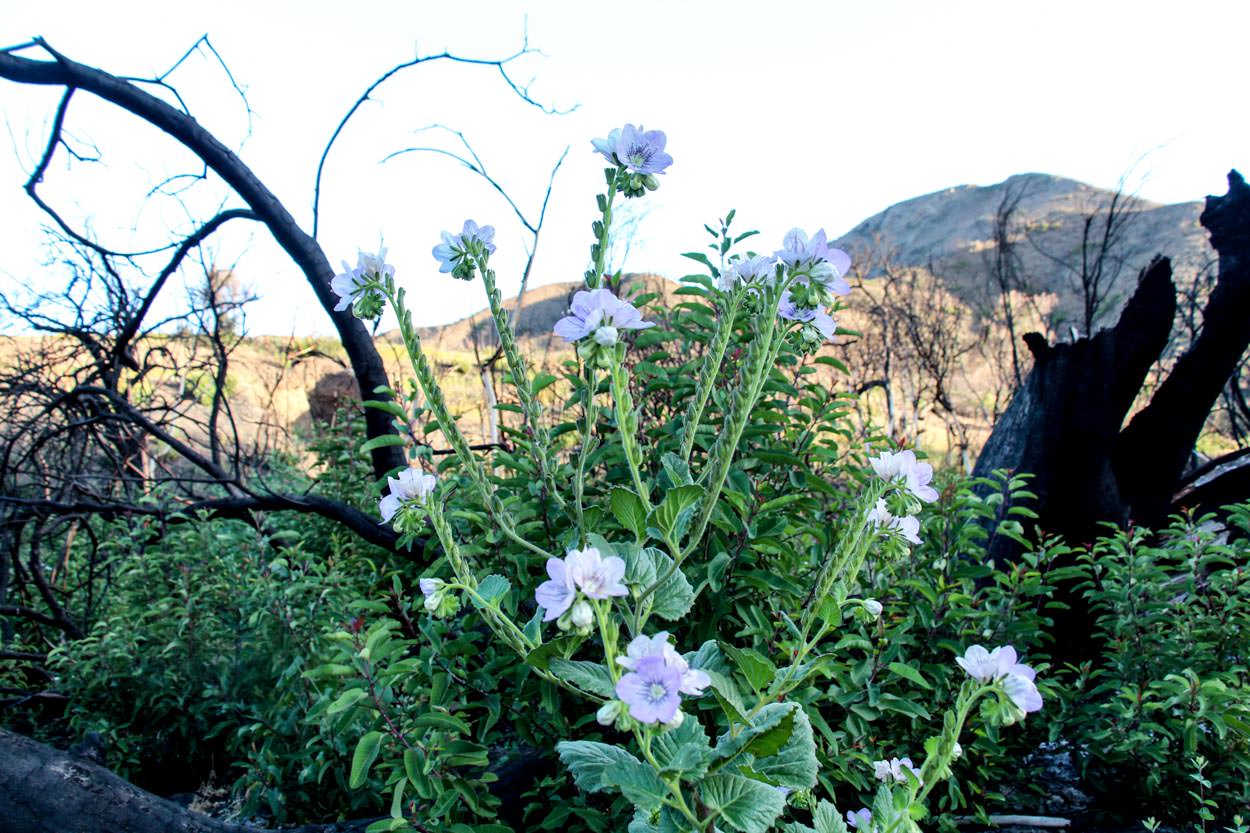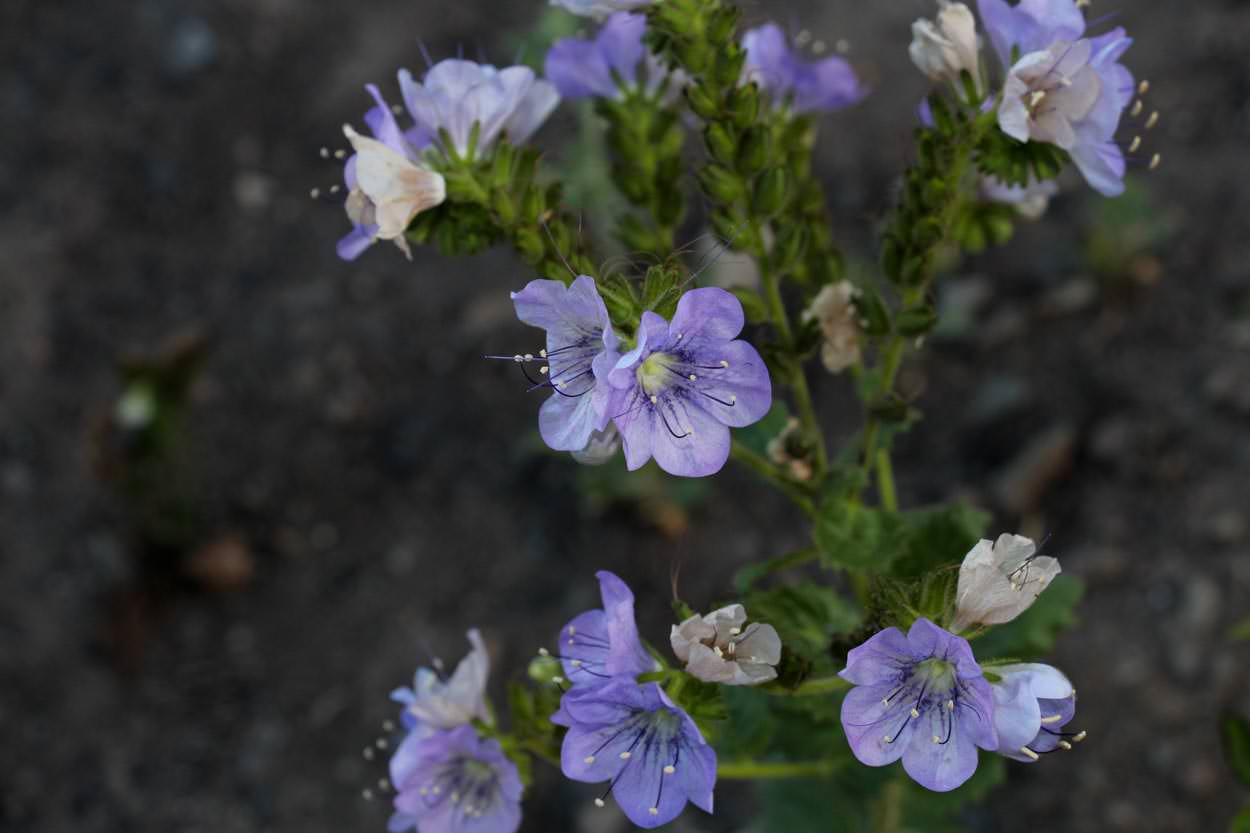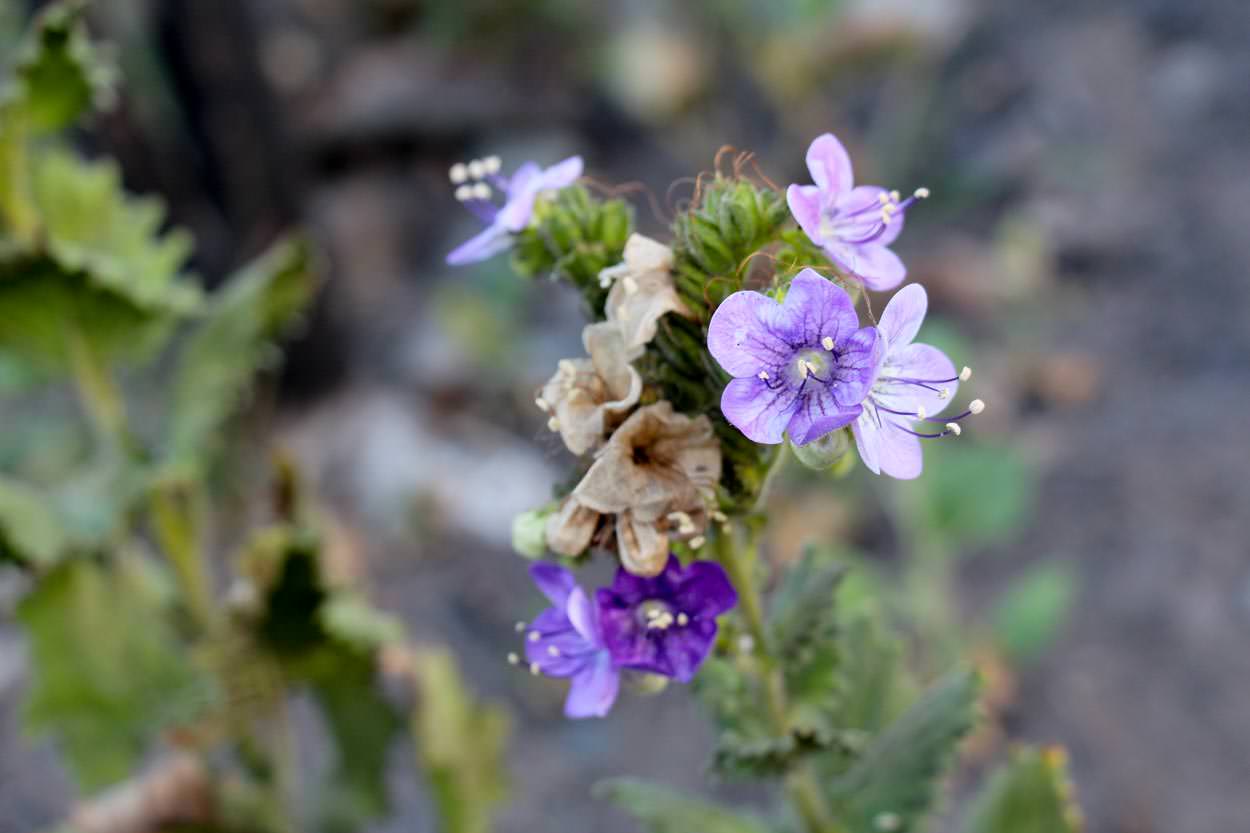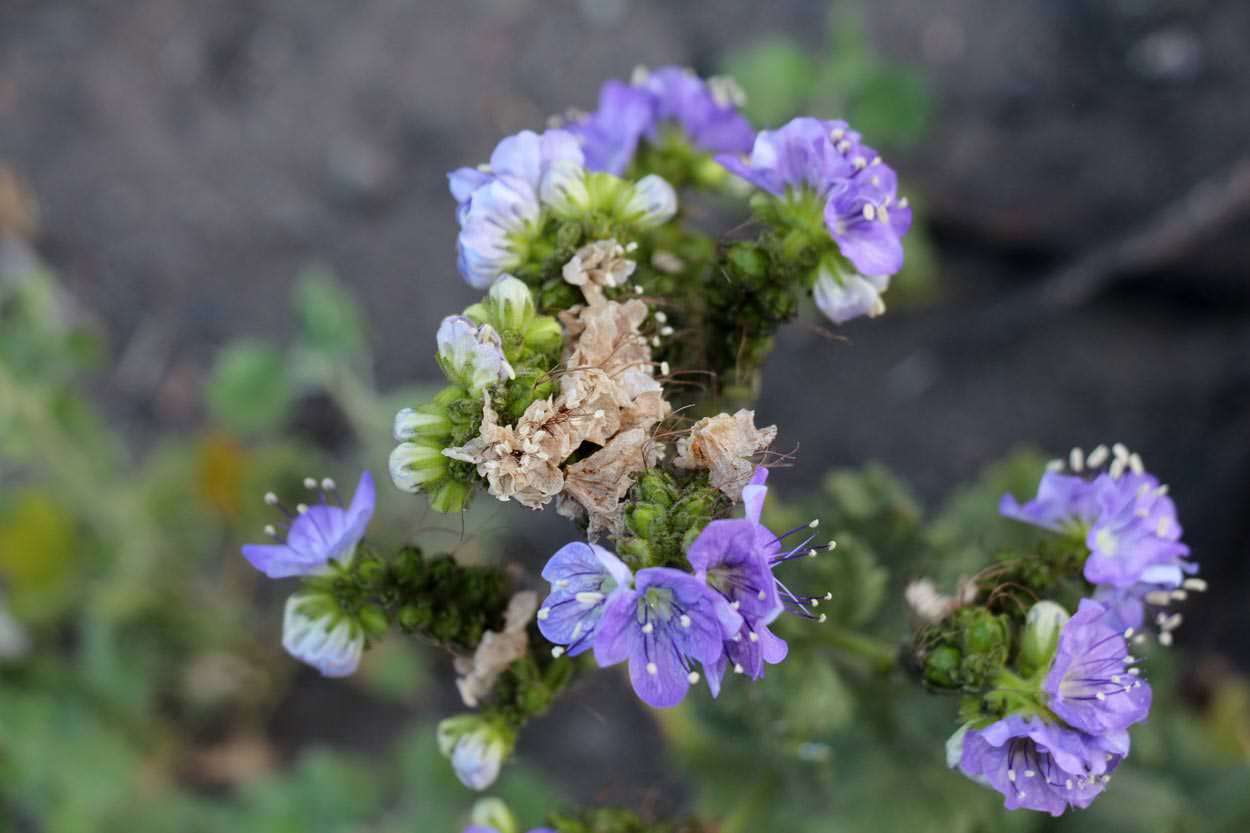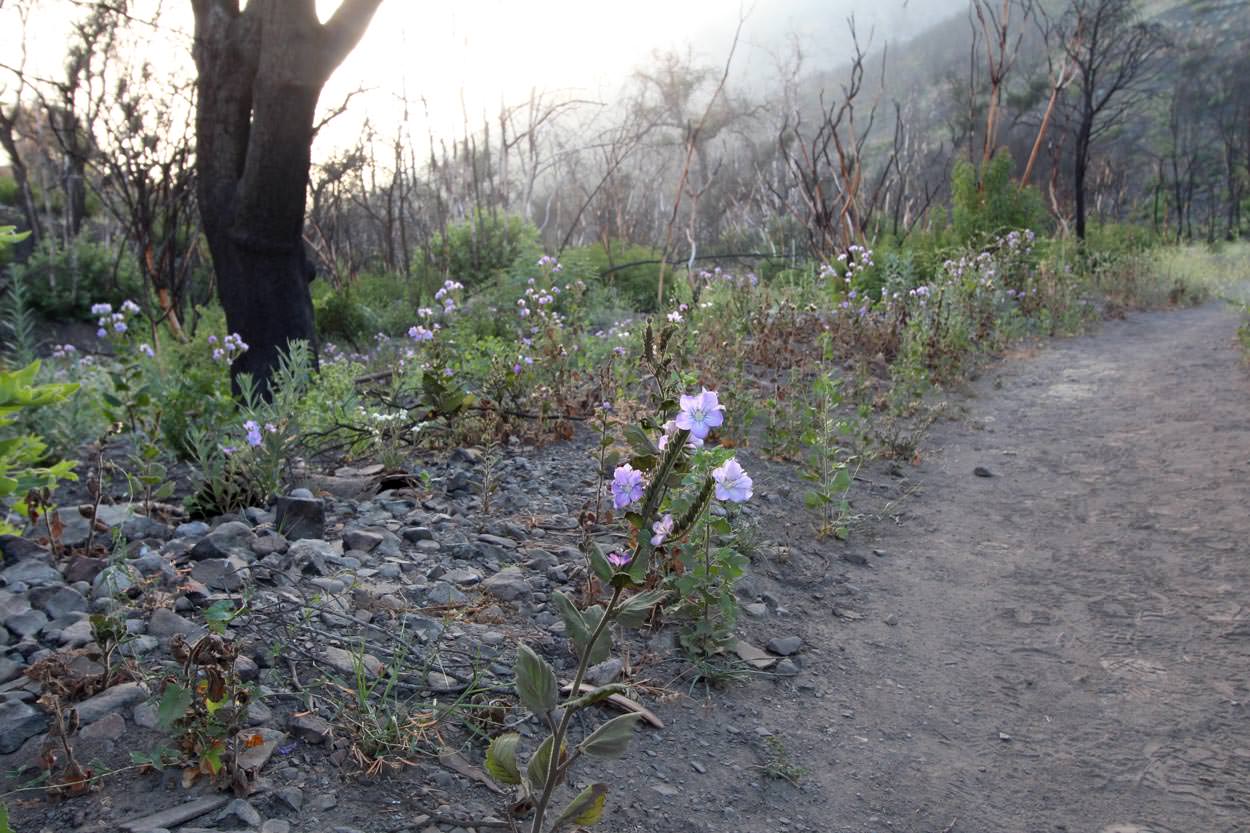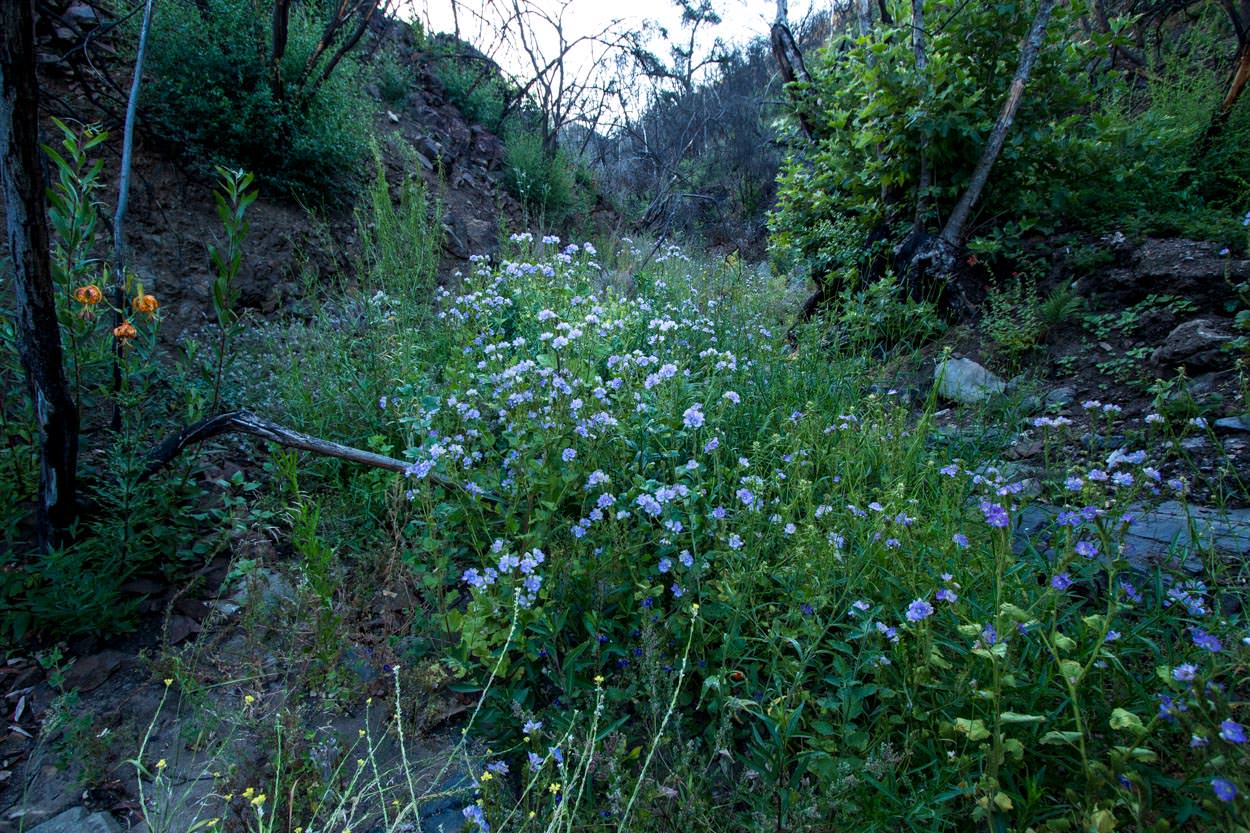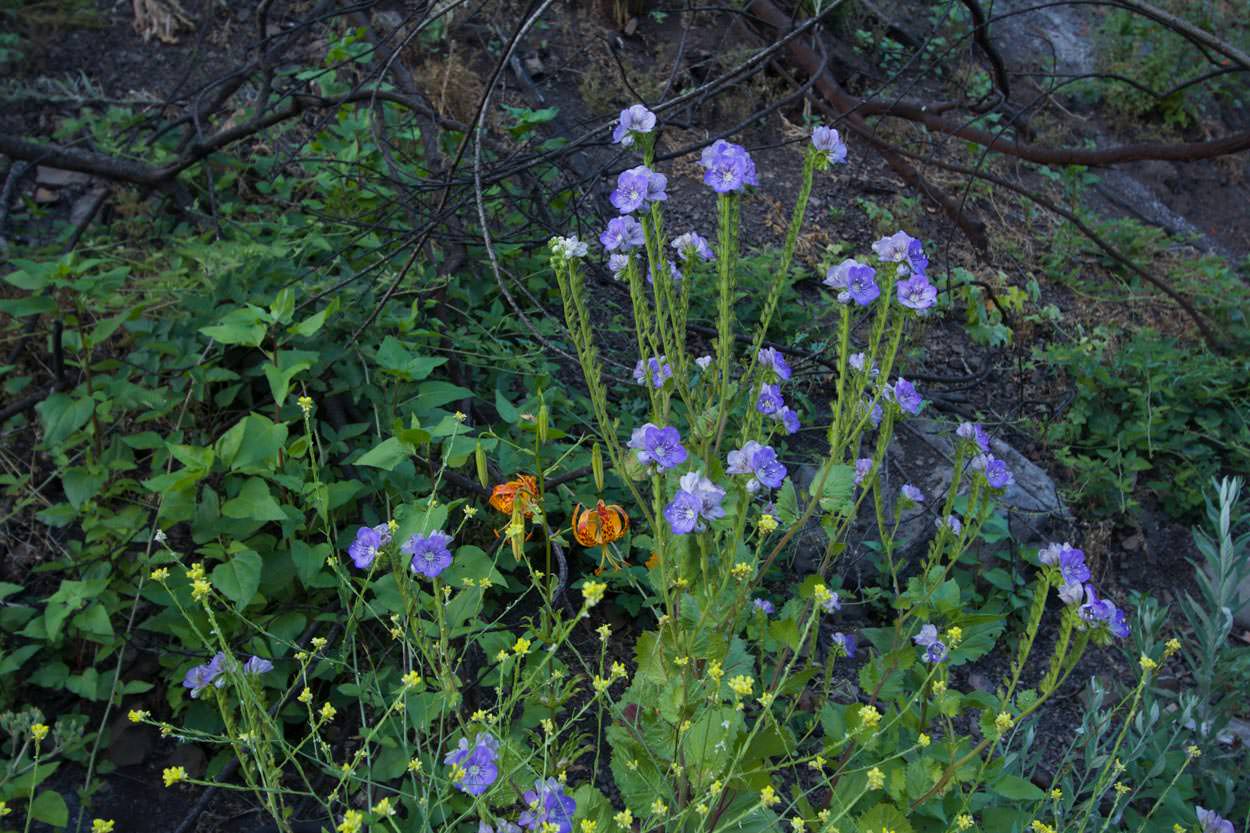Large-Flowered Phacelia
- Phacelia grandiflora
| Common Name(s): | Large-Flowered Phacelia |
| Scientific Name: | Phacelia grandiflora |
| Family: | Boraginaceae (Borage) |
| Plant Type: | Annual |
| Size: | up to 3 feet |
| Habitat: | woodlands, chaparral, coastal sage scrub |
| Blooms: | January to June |
| Fire Response: | Fire Follower |
There are dozens of species of the genus Phacelia in the United States, and quite a few are found here in our Santa Monica mountains. This particular species is a sturdy-looking plant with showy, saucer-shaped lavender flowers that are present from February to June. The petals have darker purple streaks producing a veined look. Grandifloria tells you that the flowers are larger than in other Phacelia species - they are up to 2 inches in diameter.
The plant is hairy throughout and sticky, exuding a substance that leaves a reddish tint on what they touch and may cause a rash for some people. Its leaves are oval-shaped, tooth-edged and about 2 inches long.
Other Phacelias you may encounter in our area are Parry's Phacelia, whose striking flowers are a deep purple with white spots towards the insides of the petals; Caterpillar Phacelia, with small whitish flowers perched on top of a wispy, caterpillar-like structure; and Imbricate Phacelia, somewhat resembling Caterpillar Phacelia but having the flower-caterpillar-like structure being more compact.
Response to Fire: Large flowered phacelia is relatively uncommon in our mountains. After the fire, entire slopes will be covered with it. Springing to life, the long dormant seeds (since the last fire) are signaled by the fire, heat and smoke to germinate. An impressive number of these plants will make best use of this opportunity to fulfill their destiny.
Additional References:
Roadside Plants of Southern California, by Thomas J. Belzer
California Native Plants for the Garden, by Carol Bornstein, David Fross, and Bart O'Brien
California Herbal Remedies, by LoLo Westrich
Contributed by Liz Baumann
Featured Plants in the Boraginaceae (Borage) Family:
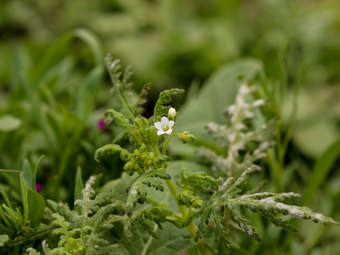
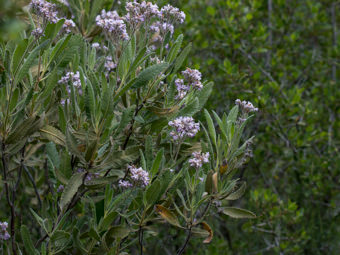
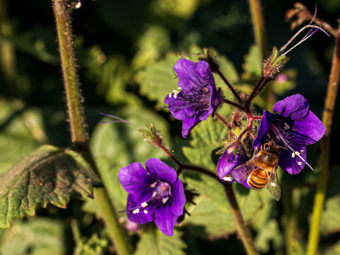
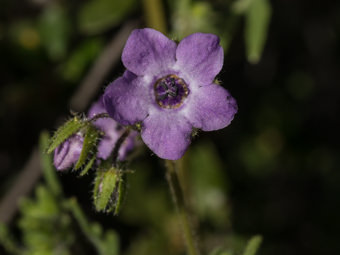
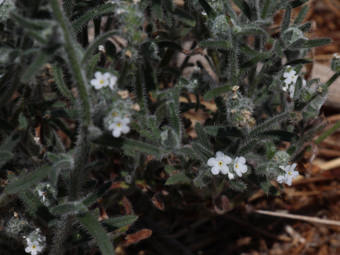
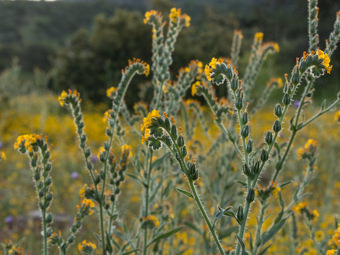
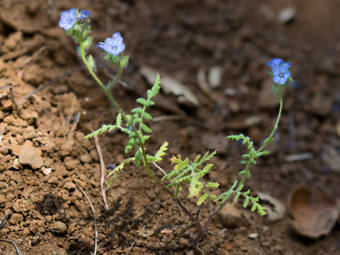
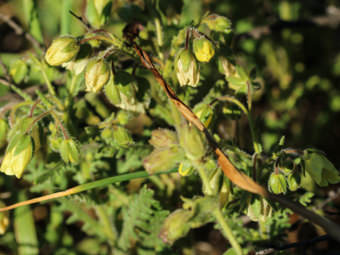
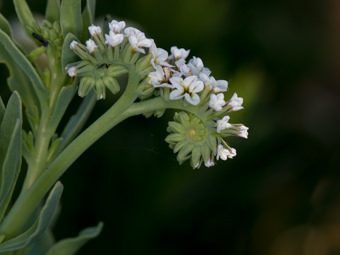
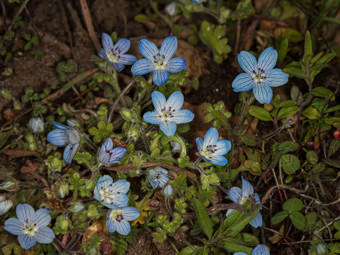
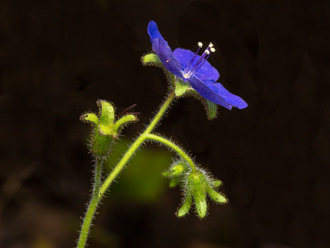
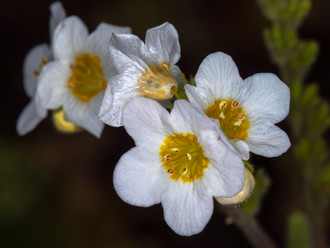
Last modified: June 04 2024 08:31:42.
Number of Images: 16
Image Size Total: 3,398,402
References:
Wildflowers of the Santa Monica Mountains, by Milt McAuleyFlowering Plants: The Santa Monica Mountains, Coastal and Chaparral Regions of Southern California, by Nancy Dale
Chumash Ethnobotany: Plant Knowledge Among the Chumash People, by Jan Timbrook
Leaf Shapes Primer - Botanical Terms for Leaves: - Link


